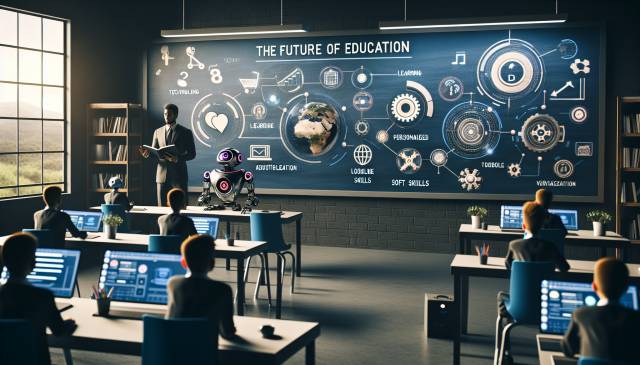
As we navigate through the 21st century, education is undergoing a remarkable transformation. Traditional classrooms are evolving into interactive learning environments, driven by technology and innovative teaching methods. In this blog post, we will explore the latest trends in modern education that are reshaping how students learn and teachers instruct.
The Rise of Online Learning Platforms
One of the most significant trends in modern education is the rise of online learning platforms. Institutions are increasingly offering courses online, making education more accessible to learners worldwide. Here are some key benefits of online learning:
- Flexibility: Learners can study at their own pace and schedule, making it easier to balance education with work and personal life.
- Variety: A wide range of courses are available, allowing students to explore different subjects and specialties.
- Cost-effectiveness: Online courses often come at a lower cost compared to traditional classroom settings.
Personalized Learning Experiences
Another emerging trend is personalized learning, where educational experiences are tailored to individual student needs and preferences. This approach can greatly enhance student engagement and success. Some methods of personalized learning include:
- Adaptive Learning Technology: Software that adjusts the difficulty level of content based on a student's performance.
- Learning Analytics: Using data to track student progress and adjust teaching strategies accordingly.
- Project-Based Learning: Students work on projects that interest them, fostering a deeper connection to the material.
Emphasis on Soft Skills and Critical Thinking
In today's job market, soft skills and critical thinking are just as important as technical knowledge. Modern education systems are placing a greater emphasis on developing these skills. Educators are incorporating activities that promote:
- Collaboration: Group projects and peer reviews encourage teamwork and communication.
- Problem-Solving: Real-world challenges are presented to students, pushing them to think critically and devise solutions.
- Creativity: Encouraging creative thinking through the arts and innovative projects allows students to express themselves and think outside the box.
Integration of Technology in the Classroom
The integration of technology in the classroom is transforming teaching methods and student engagement. Tools like interactive whiteboards, educational apps, and virtual reality are making learning more engaging and immersive. Here are some ways technology is being used:
- Flipped Classrooms: Students learn new content at home, freeing up classroom time for hands-on activities and discussions.
- Gamification: Incorporating game elements into lessons to motivate students and enhance learning.
- Virtual and Augmented Reality: Providing immersive experiences that bring subjects to life, such as virtual field trips or scientific simulations.
The Globalization of Education
Education is becoming increasingly globalized, with students from different countries collaborating on projects and sharing knowledge. This trend encourages cultural exchange and prepares students for a global workforce. Here are some aspects of globalization in education:
- International Collaborations: Universities are forming partnerships to offer joint programs and exchange opportunities.
- Diverse Classrooms: Classrooms are becoming melting pots of cultures, enhancing the learning experience through diverse perspectives.
- Global Competencies: Education systems are focusing on teaching skills necessary for success in a globalized world, such as language proficiency and cultural awareness.
Conclusion
Modern education is evolving rapidly, driven by technology, personalized learning, and a focus on critical skills. As learners, it is essential to stay informed about these trends to maximize the benefits of the educational opportunities available today. Whether you are considering taking an online course or looking to enhance your skills, embracing these trends will help you achieve your educational goals and prepare you for the future.

